
Star Control: Famous Battles of the Ur-Quan Conflict, Volume IV is an action-strategy video game developed by Toys for Bob and published by Accolade. It was originally released for MS-DOS and Amiga in 1990, followed by ports for the Sega Genesis and additional platforms in 1991. The story is set during an interstellar war between two space alien factions, with humanity joining the Alliance of Free Stars to defeat the invading Ur-Quan Hierarchy. Players can choose to play as either faction, each with seven different alien starships which are used during the game's combat and strategy sections.

David Lance Arneson was an American game designer best known for co-developing the first published role-playing game (RPG), Dungeons & Dragons, with Gary Gygax, in the early 1970s. Arneson's early work was fundamental to the role-playing game (RPG) genre, pioneering devices now considered to be archetypical, such as cooperative play to develop a storyline instead of individual competitive play to "win" and adventuring in dungeon, town, and wilderness settings as presented by a neutral judge who doubles as the voice and consciousness of all characters aside from the player characters.

Elite is a space trading video game. It was written and developed by David Braben and Ian Bell and originally published by Acornsoft for the BBC Micro and Acorn Electron computers in September 1984. Elite's open-ended game model, and revolutionary 3D graphics led to it being ported to virtually every contemporary home computer system and earned it a place as a classic and a genre maker in gaming history. The game's title derives from one of the player's goals of raising their combat rating to the exalted heights of "Elite".

Computer Space is a space combat arcade video game released in 1971. Created by Nolan Bushnell and Ted Dabney in partnership as Syzygy Engineering, it was the first arcade video game as well as the first commercially available video game. Computer Space is a derivative of the 1962 computer game Spacewar!, which is possibly the first video game to spread to multiple computer installations. It features a rocket controlled by the player engaged in a missile battle with a pair of hardware-controlled flying saucers set against a starfield background. The goal is to score more hits than the enemy spaceships within a set time period, which awards a free round of gameplay. The game is enclosed in a custom fiberglass cabinet, which Bushnell designed to look futuristic.

Netrek is an Internet game for up to 16 players, written almost entirely in cross-platform open-source code. It combines features of multi-directional shooters and team-based real-time strategy games. Players attempt to disable or destroy their opponents' ships in real-time combat, while taking over enemy planets by bombing them and dropping off armies they pick up on friendly planets. The goal of the game is to capture all the opposing team's planets.
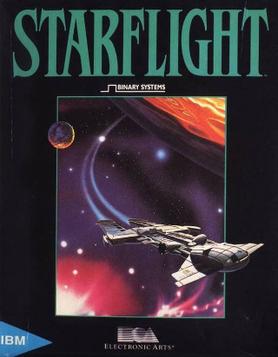
Starflight is a space exploration, combat, and trading role-playing video game created by Binary Systems and published by Electronic Arts in 1986. Originally developed for IBM PC compatibles, it was later ported to the Amiga, Atari ST, Macintosh, and Commodore 64. A fully revamped version of the game was released for the Sega Genesis in 1991.
A multiplayer video game is a video game in which more than one person can play in the same game environment at the same time, either locally on the same computing system, on different computing systems via a local area network, or via a wide area network, most commonly the Internet. Multiplayer games usually require players to share a single game system or use networking technology to play together over a greater distance; players may compete against one or more human contestants, work cooperatively with a human partner to achieve a common goal, or supervise other players' activity. Due to multiplayer games allowing players to interact with other individuals, they provide an element of social communication absent from single-player games.
1972 marked an important landmark in the history of the video game industry with the releases of Pong and the Odyssey home console. The profile of electronic games rose substantially and companies began exploring the distribution of video games on a larger scale. Important mainframe computer games were created in this period which became the basis for early microcomputer games.

Star Trek is a text-based strategy video game based on the Star Trek television series (1966–69) and originally released in 1971. In the game, the player commands the USS Enterprise on a mission to hunt down and destroy an invading fleet of Klingon warships. The player travels through the 64 quadrants of the galaxy to attack enemy ships with phasers and photon torpedoes in turn-based battles and refuel at starbases. The goal is to eliminate all enemies within a random time limit.
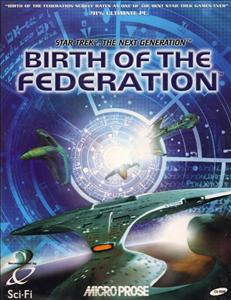
Star Trek: Birth of the Federation is a 4X turn-based strategy video game developed by MicroProse and published by Hasbro Interactive. The game was initially released in 1999 for Windows personal computers.
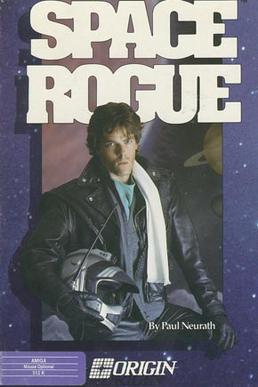
Space Rogue is a space flight simulation video game developed by Origin Systems and published by Origin Systems, Wave Brain, and Night Dive Studios. The game was released in 1989 for Apple II and Commodore 64; the series was later ported to DOS, Macintosh, Amiga, and Atari ST. The game was also released in the Japanese language for PC-9801, X68000, and FM Towns. The FM Towns version had its intro remade with slight animations and new illustrations, along with scrolling Japanese text, and exclusive CD quality background music. Taking place within the Far Arm of the Milky Way galaxy, Space Rogue's main story revolves around the player character's efforts to pursue a career and undertake long-range goals beyond his immediate mission.
A government simulation or political simulation is a game that attempts to simulate the government and politics of all or part of a nation. These games may include geopolitical situations, the creation of domestic political policies, or the simulation of political campaigns. They differ from the genre of classical wargames due to their discouragement or abstraction of military or action elements.

FreeSpace 2 is a 1999 space combat simulation computer game developed by Volition as the sequel to Descent: FreeSpace – The Great War. It was completed ahead of schedule in less than a year, and released to very positive reviews, but the game became a commercial failure, and was described by certain critics as one of 1999's most unfairly overlooked titles.

James Clavell's Shōgun is an interactive fiction video game written by Dave Lebling and published by Infocom in 1989. It was released for the Amiga, Apple II, DOS, and Macintosh. The game is based on the 1975 novel Shōgun by James Clavell. It is Infocom's thirty-third game.
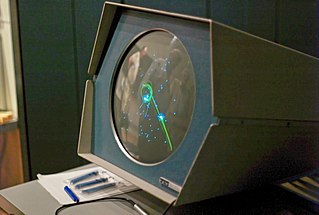
Spacewar! is a space combat video game developed in 1962 by Steve Russell in collaboration with Martin Graetz, Wayne Wiitanen, Bob Saunders, Steve Piner, and others. It was written for the newly installed DEC PDP-1 minicomputer at the Massachusetts Institute of Technology. After its initial creation, Spacewar! was expanded further by other students and employees of universities in the area, including Dan Edwards and Peter Samson. It was also spread to many of the few dozen installations of the PDP-1 computer, making Spacewar! the first known video game to be played at multiple computer installations.
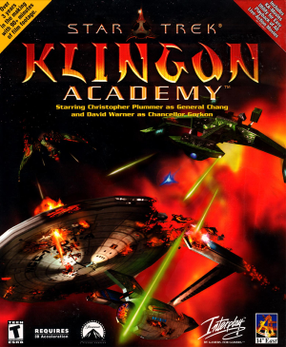
Star Trek: Klingon Academy is a space flight simulator video game developed by 14 Degrees East, an internal development house of publisher Interplay Entertainment. The game follows a young Klingon warrior named Torlek as he attends the Elite Command Academy, a war college created by General Chang to prepare warriors for a future conflict with the United Federation of Planets. Christopher Plummer and David Warner reprised their respective roles as Chang and Gorkon for the production of Klingon Academy.
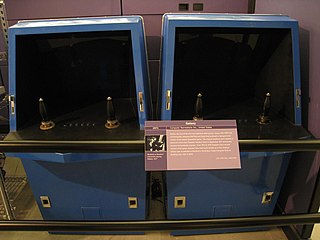
Galaxy Game is a space combat arcade game developed in 1971 during the early era of video games. Galaxy Game is an expanded version of the 1962 Spacewar!, potentially the first video game to spread to multiple computer installations. It features two spaceships, "the needle" and "the wedge", engaged in a dogfight while maneuvering in the gravity well of a star. Both ships are controlled by human players.
Begin, A Tactical Starship Simulation is a video game released for MS-DOS in 1984 and consists of combat between spaceships.
The history of video games spans a period of time between the invention of the first electronic games and today, covering many inventions and developments. Video gaming reached mainstream popularity in the 1970s and 1980s, when arcade video games, gaming consoles and home computer games were introduced to the general public. Since then, video gaming has become a popular form of entertainment and a part of modern culture in most parts of the world. The early history of video games, therefore, covers the period of time between the first interactive electronic game with an electronic display in 1947, the first true video games in the early 1950s, and the rise of early arcade video games in the 1970s. During this time there was a wide range of devices and inventions corresponding with large advances in computing technology, and the actual first video game is dependent on the definition of "video game" used.
Trek-80 is a text-based video game written by Steve Dompier in 1976 and sold by Processor Technology for their Sol-20 computer and suitable S-100 bus machines.













